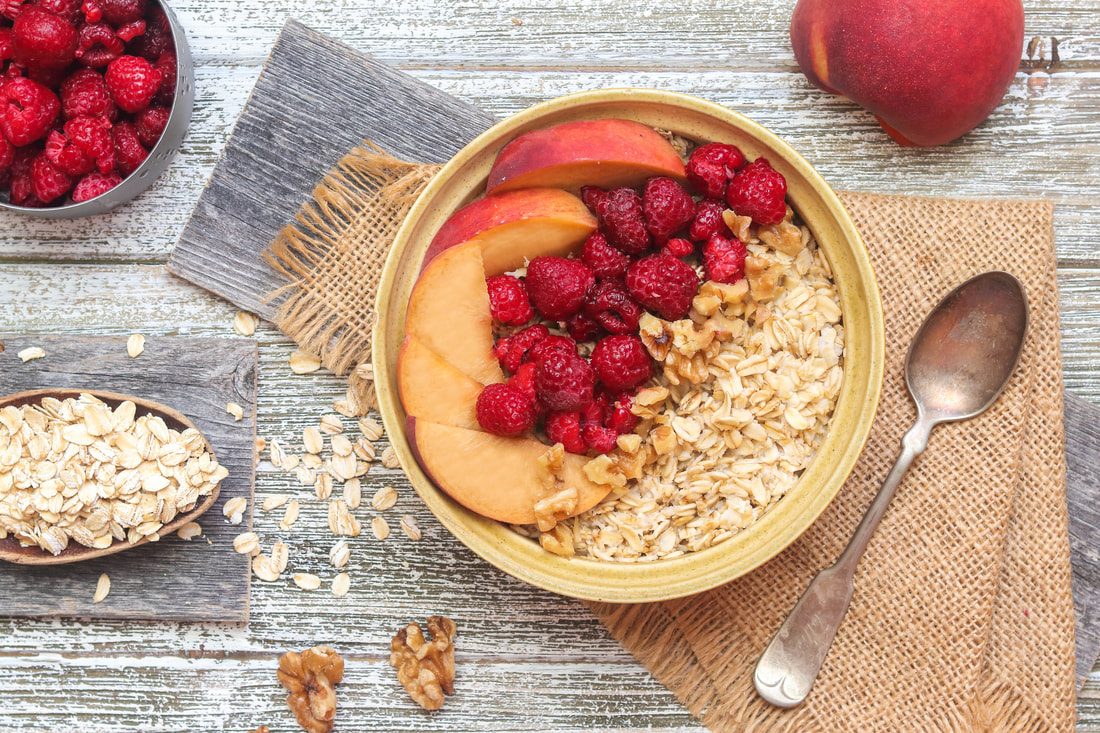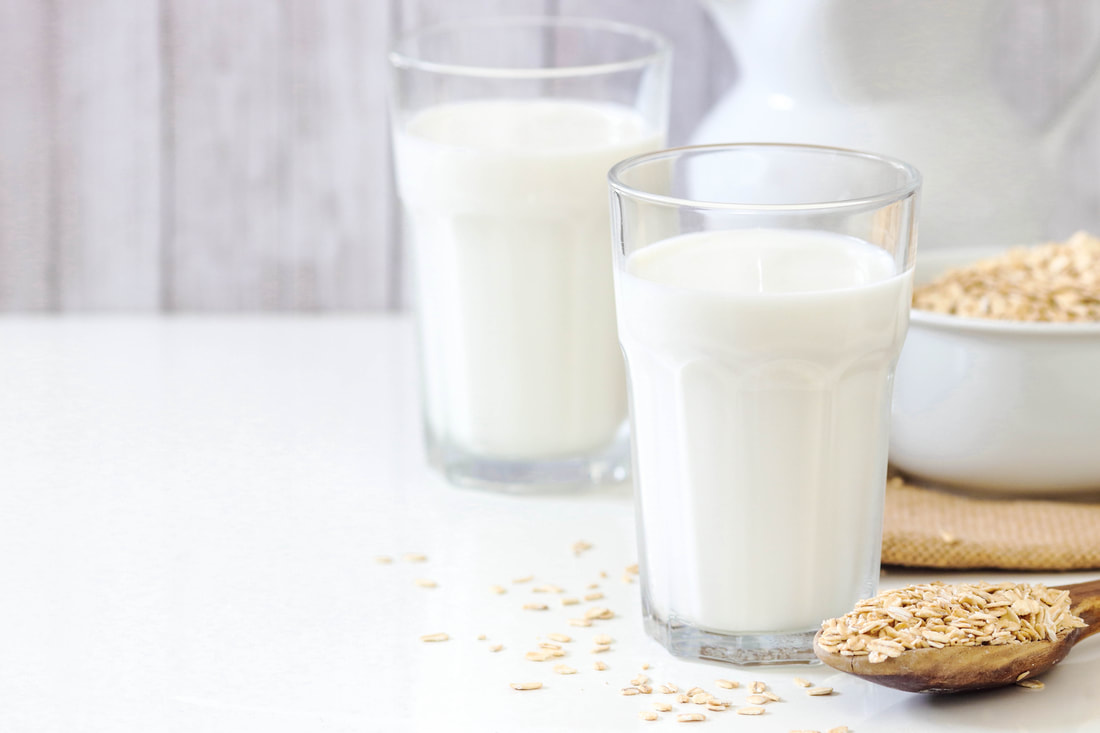|
There is a rumour which says celiac's cannot eat oats. To dispel this myth, you first need to know Oat and his friends and family as I do. Then you will see they are not bad folks to have around… or are they? If you knew the Mr. and Mrs. Monocot, you will know they had three daughters. Their oldest child who married into the Triticum's bore three children of her own: Wheat, a strong burly chap; then Rye, who has a wry sense of humour; and last, Barley, who works at the local malt shop. Mr. and Mrs. Monocot's middle child’s married name is Stavia, and she had two children: Rice and Oat. The Monocot's youngest child’s surname became Poaceae. The Poaceae raised three strapping children of her own: Sorghum, who had a Southern accent as thick as molasses; Corn, who has hair like silk; and Millet the miller. The whole Grass family and their descendants are a wholesome group, however, Wheat and his brothers don't know their own strength. They are all the thick skinned type who sometimes rub people the wrong way; as in the problems create by the high concentration of gluten in grains of the triticum family. Oat is a humble, wholesome, healthy lad. Nevertheless, when he hangs around his cousins Wheat, Rye and Barley their coarse form of jesting rubs off on him and he becomes offensive to his brother Rice and his other cousins; as when oat can easily become contaminated with gluten when processed in the same facilities used for processing wheat. On his own, Oat is a likable guy almost anyone would get along with him, but there is a streak in him which clicks with his cousin Wheat and can distort this likable lad in a moment, though he never goes as far in biting jesting as Rye. Getting back to the real worldGluten is the term for the storage protein of wheat. It is what remains after the starch granules are washed away; and accounts for 10-15 percent of the wheat flour. The fraction of gluten most studied in celiac disease is called gliadin, but there are other proteins which chemically resemble gliadin in rye and barley. These similar proteins are the offending part. The offending protein in rye are secalins and in barley are hordeins. These proteins are not strictly glutens but are generally included in the term and are still toxic to people with celiac disease. Wheat, rye and barley are closely related genetically. Oats are on a different branch, more closely related to rice. Most studies of gluten look at gliadin, but it is possible there are other proteins in gluten to which people are sensitive. However, oats contain a protein fraction called avenin. “Avenin...Was shown to cause a reaction in a few celiac patients that is not fundamentally different from the reaction to gluten peptides [gliadins]. But clinical studies have shown that the majority or people with celiac disease tolerate oats quite well.” - Peter H.R. Green, M.D., and Rory Jones, M.S., Celiac Disease A Hidden Epidemic: Is Gluten Making You Sick? It is believed oats are safe for over 98 percent of those with celiac disease. Studies have found patients ingesting oats sometimes have more symptoms because of the increase in dietary fibre, but very few have any type of immune reaction. GETTING BACK TO OUR ANALOGYWhen if Oat hangs around with, and spends much of his growing-up years with, his cousin Wheat cross contamination remains an issue. Oats and other grains are often grown in close proximity to, or are processed at the same facilities as, wheat, rye and barley. If not sorted properly, gluten can be accidentally ground in with the Oats, contaminating them.
Thankfully there is, and has been for sometime, a solution on the market, certified gluten-free oats. It is actually two solutions under one header. Certified gluten-free oats can be raised in two ways. The first is to raise the crops well away from wheat crops, the fields then are inspected to verify they are far enough away from wheat. The second is to raise the crop as per the norm, but in the factory/mill an electric eye scans the grains for gluten. The product is then sorted to remove all wheat kernels. Ultimately, both methods are inspected at the end in a lab and if found to contain less than 20 ppm of gluten they are certified ‘gluten-free.’ Look for the certification and eat with ease. However, monitor your health for any symptoms, bearing in mind there might be an overload of fibre, if you have a flare up consult your doctor immediately, you may be among the two percent of celiacs who are allergic to oats, or rather to oat protein. Like what you read? Sign up to our newsletter and find out about posts sooner! How to Comment Anonymously on This Site. Check out this brief and entertaining tutorial from Life After Gluten on how to comment anonymously on a site that uses disqus.
Comments
|
Click here for the best available price for a Digital Measuring Cup/Scale on Amazon.
Affiliate Links Disclaimer Life After Gluten receives a small commission from the sales made through our affiliate links. However, I only promote affiliate products that are relevant to the articles that brought you here. The commissions received through your purchases help maintain this site. Thank you for your support!
Happy to meet you,
If you are that person with a million and one allergies and intolerance I am there to say you are not alone! Life After Gluten can be better than life with wheat. Living lactose-free since 2007 and gluten-free since 2013. Also intolerant and/or allergic to mushrooms, soy, and yeast. Categories
All
Archives
March 2024
Affiliate Links Disclaimer Life After Gluten receives a small commission from the sales made through our affiliate links. However, I only promote affiliate products that are relevant to the articles that brought you here. The commissions received through your purchases help maintain this site. Thank you for your support!
|
Photo from Brett Jordan





 RSS Feed
RSS Feed
